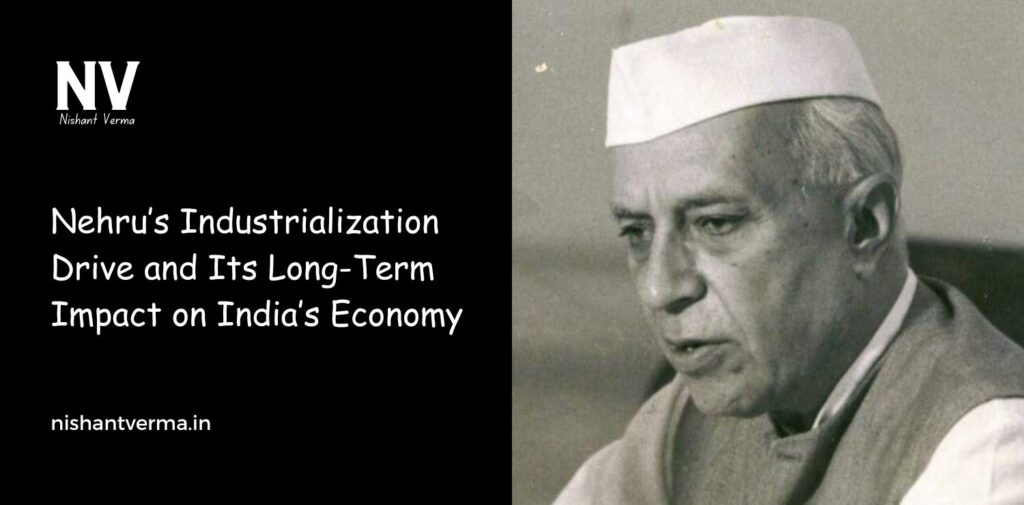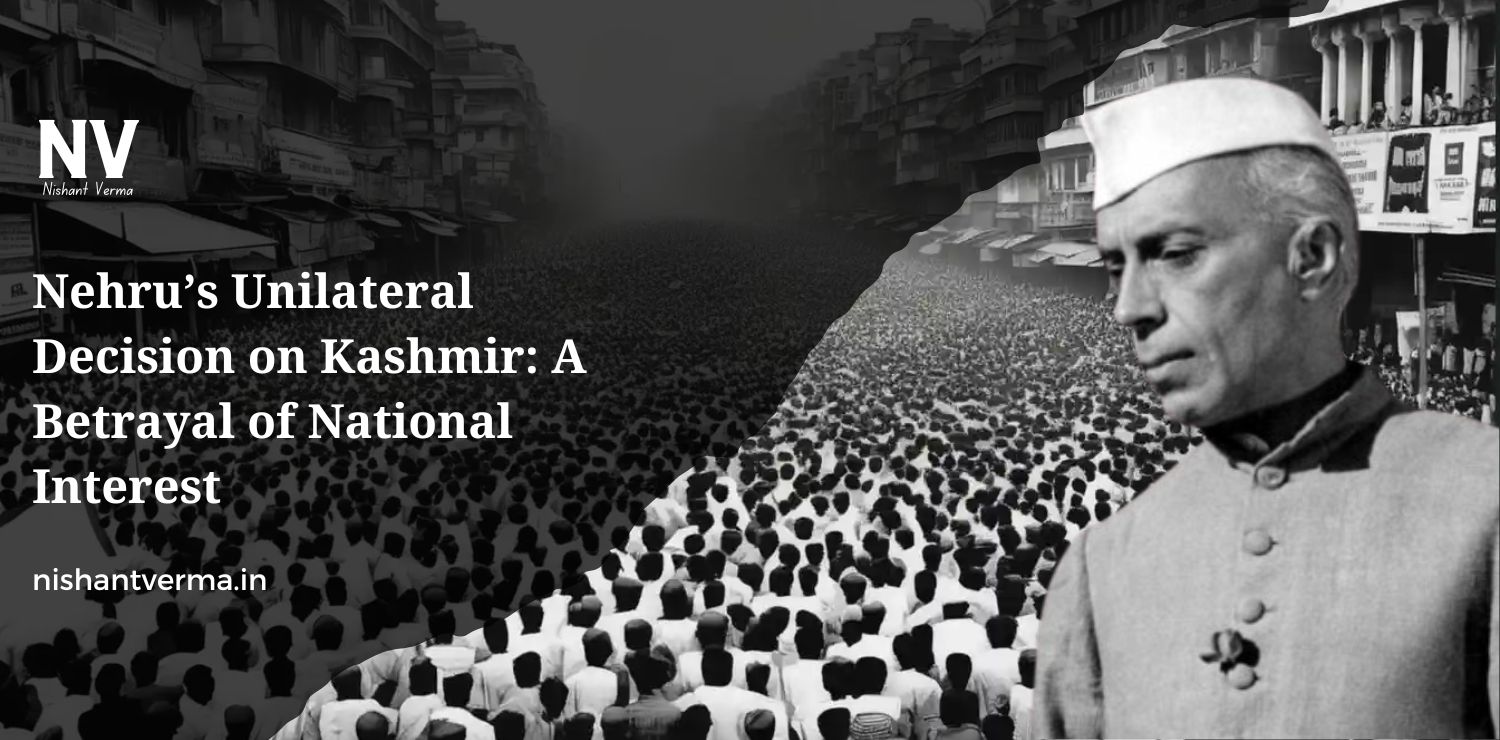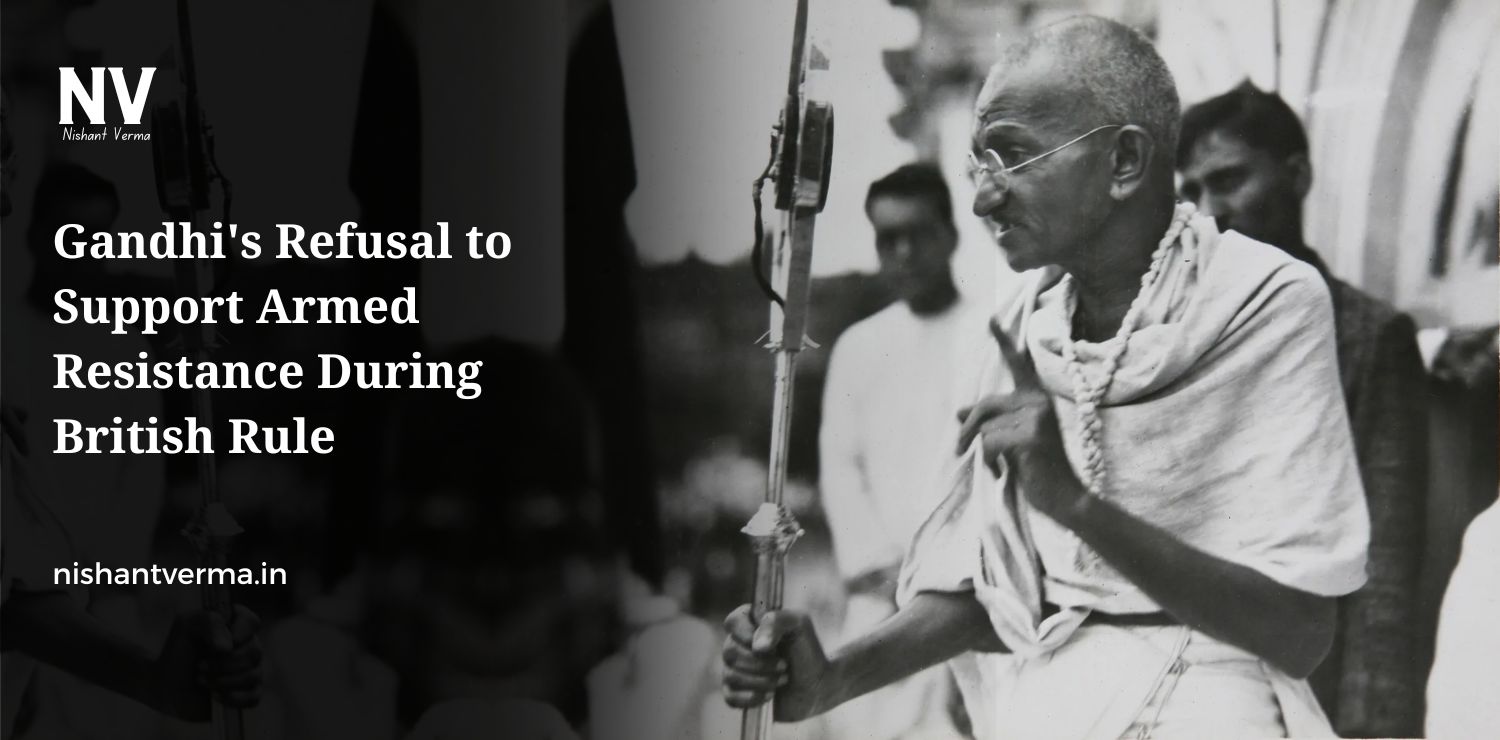Jawaharlal Nehru, India’s first Prime Minister, had a bold vision for the country’s future. After India gained independence in 1947, Nehru was determined to transform India into a modern, self-reliant nation. He believed that industrialization was the key to achieving this goal. Under his leadership, India embarked on an ambitious industrialization drive that aimed to build heavy industries, infrastructure, and a strong public sector. While this drive had some successes in terms of laying the foundation for industrial growth, its long-term consequences on the Indian economy were complex and, at times, problematic.
Nehru’s industrial policies were based on the belief that economic independence could be achieved through the growth of industries, particularly those in the public sector. However, the way in which industrialization was pursued left lasting effects on India’s economy, many of which can still be seen today.
Nehru’s Vision for Industrialization
Nehru believed that India’s path to progress required rapid industrialization. Before independence, India’s economy was largely agrarian, with agriculture employing the majority of the population. Nehru thought that relying solely on agriculture would not be enough to propel India into the modern world. He wanted to build a strong industrial base that would provide jobs, stimulate economic growth, and make India less dependent on foreign countries for goods and technology.
To achieve this, Nehru promoted the idea of state-led industrialization, where the government would play a central role in developing key industries. He envisioned building large-scale industries in sectors like steel, machinery, chemicals, and electricity, all of which were essential for the country’s economic development. The idea was that these industries would lay the foundation for India’s economic self-sufficiency and create jobs for millions of people.
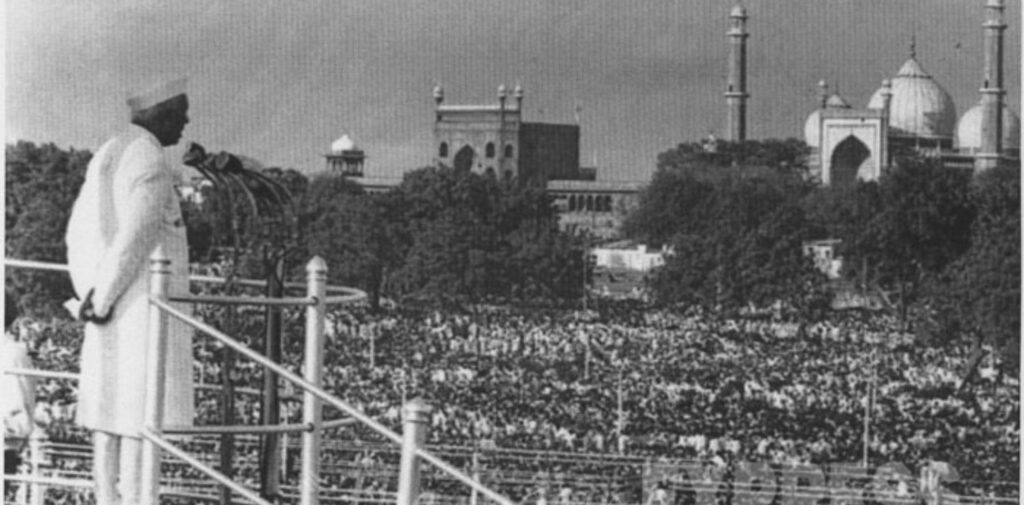
The Role of Public Sector Enterprises
A key feature of Nehru’s industrialization policy was the creation of public sector enterprises (PSEs). The government took control of key industries and set up state-owned companies to run industries like steel, power, coal, and transportation. Nehru believed that the public sector would play a central role in driving India’s industrialization because the private sector, at the time, was too small and underdeveloped to make significant investments in large-scale industries.
The first major success of Nehru’s industrialization policy was the establishment of large industrial projects such as the Bhilai Steel Plant, the Durgapur Steel Plant, and the Bokaro Steel Plant. These plants were developed with the help of foreign technology and expertise and became symbols of India’s industrial progress. Under Nehru’s leadership, the government also set up several other industries, including those in sectors like electricity, telecommunications, and defense.
Nehru’s commitment to state-led industrialization was also reflected in his emphasis on planning. He introduced the concept of five-year plans, inspired by the Soviet Union’s model, to guide the country’s economic development. The focus of the first few plans was on the development of heavy industries and infrastructure.
The Benefits of Nehru’s Industrialization Drive
In the early years, Nehru’s industrialization drive did produce some positive outcomes. The creation of large public sector enterprises provided the foundation for many industries in India, and these industries played a key role in economic development. These industries also helped reduce India’s dependence on foreign countries for goods and technology, making the country more self-reliant.
The industrialization drive also created jobs for many Indians. The establishment of factories, steel plants, and power stations led to the growth of a new urban working class. The demand for skilled and unskilled labor in these industries provided employment to millions of people who had previously worked in agriculture. This urbanization helped in creating a middle class and slowly brought about a shift from an agrarian economy to a more diversified one.
Moreover, the emphasis on infrastructure development during Nehru’s industrialization drive helped improve transportation, communication, and electricity supply. The development of railways, roads, and ports helped facilitate trade and industry, while the expansion of the power sector ensured that industries had access to electricity.
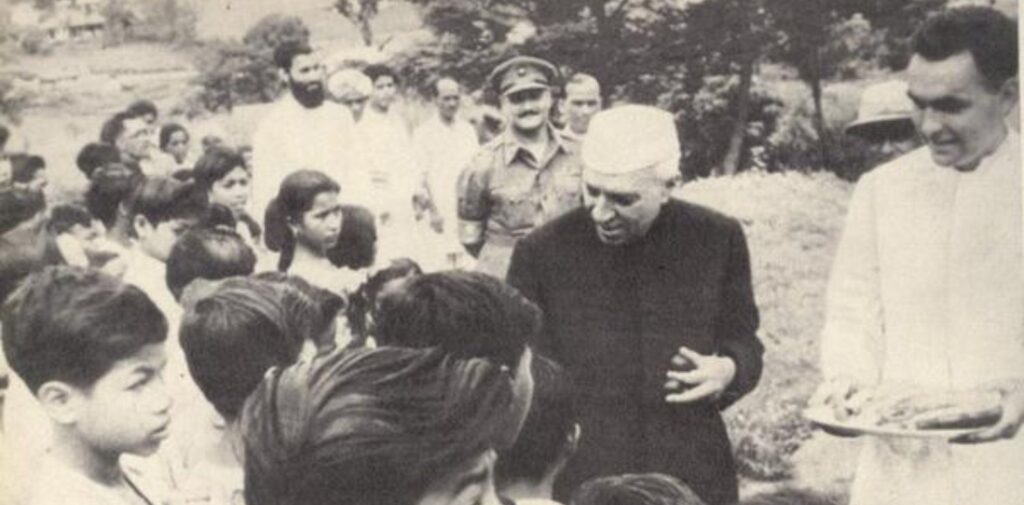
The Problems with Nehru’s Industrialization Policies
While Nehru’s industrialization drive had its successes, it also created several problems that impacted India’s economy in the long run.
1. Overemphasis on Heavy Industry
One of the main issues with Nehru’s industrial policies was the overemphasis on heavy industries like steel, machinery, and chemicals, often at the expense of lighter industries such as textiles and consumer goods. While heavy industries were important, Nehru’s focus on them did not consider the immediate needs of the population. For example, India continued to face shortages of basic goods like clothes, food, and household items, while resources were being diverted to large-scale industrial projects.
The heavy focus on public sector industries also meant that the government invested heavily in projects that required large amounts of capital and technology. These projects often took longer to complete and were more expensive than anticipated. The long gestation periods for these industries, coupled with their high capital costs, led to inefficiency and delayed returns on investment.
2. Inefficiency and Bureaucracy in the Public Sector
The public sector enterprises that Nehru promoted were often inefficient and plagued by bureaucratic red tape. Government-run industries lacked the competition and market forces that would have encouraged them to perform better. Managers and workers in state-owned industries were often more focused on job security than on improving productivity. This inefficiency led to wasted resources and slow economic growth.
Many public sector companies also became highly dependent on government subsidies and protection. The government provided these companies with favorable policies, such as easy access to credit and protection from foreign competition, but these measures prevented these industries from becoming competitive in the global market. Over time, many of these industries became outdated, inefficient, and unable to innovate.
3. Neglect of Agriculture and Rural Development
While Nehru’s industrialization policies focused on building large-scale industries, they often neglected the needs of India’s vast rural population, who were still dependent on agriculture. The rural areas continued to face issues like low agricultural productivity, poverty, and lack of infrastructure. Nehru’s policies did little to address these issues, and the rural-urban divide grew wider.
The failure to modernize agriculture left India’s farmers struggling with outdated farming methods and low yields. Despite the importance of agriculture in India’s economy, it was not given the same priority as industrial growth. This imbalance contributed to rising rural poverty and underdevelopment, which, in turn, affected the overall growth of the Indian economy.
4. Slow Economic Growth
While Nehru’s industrialization policies did lay the foundation for long-term growth, India’s economic progress in the first few decades after independence was slow. The country’s growth rate was relatively low compared to other newly independent nations. The focus on large-scale industries, inefficient public sector enterprises, and limited attention to the private sector all contributed to this slow growth. As a result, India remained one of the poorest countries in the world for many years after independence.

Long-Term Consequences on the Indian Economy
The long-term consequences of Nehru’s industrialization drive are still felt in India’s economy today. Many of the state-run industries that were set up under Nehru’s policies are now struggling with inefficiency, outdated technology, and competition from more modern and efficient private sector industries. The lack of a strong private sector for many years delayed the growth of entrepreneurial activity and innovation in India.
The heavy reliance on the public sector and the neglect of the private sector also led to the creation of a license raj, a system of government regulations that made it difficult for businesses to grow and thrive. This system continued for decades and slowed India’s economic growth. It wasn’t until the economic liberalization of the 1990s that India began to open up its economy and encourage private sector growth.
Conclusion
Nehru’s industrialization drive was a bold attempt to transform India into a modern and self-sufficient nation. While it did lay the foundation for India’s industrial sector and helped create jobs and infrastructure, the long-term consequences were mixed. The overemphasis on heavy industries, inefficiency in the public sector, and neglect of agriculture and rural development contributed to slow economic growth and rising inequality.
In retrospect, Nehru’s industrial policies, though well-intentioned, failed to create a balanced and sustainable economy. They overlooked the importance of the private sector, efficient governance, and the need to address rural poverty. While India has made progress since then, the lessons from Nehru’s industrialization drive remind us of the need for a more inclusive and efficient approach to economic development.

